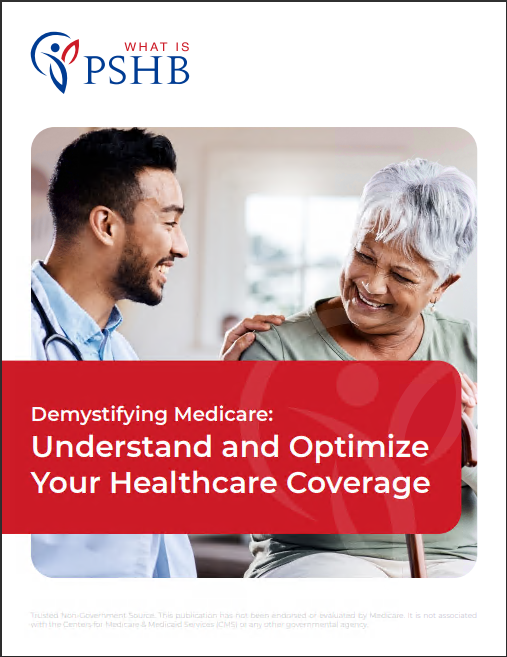Key Takeaways
-
Copayments can vary widely between health plans, and understanding how they work can help you avoid unexpected costs.
-
Knowing the difference between copayments, coinsurance, and deductibles ensures that you choose the right plan for your needs as a USPS employee.
The Truth About Copayments: More Than Just a Flat Fee
When selecting a health plan, you might assume that copayments are straightforward. After all, they’re just set amounts you pay for doctor visits, prescriptions, and certain services, right? Not necessarily. Copayments can be more complex than they seem, and as a USPS employee, understanding them can make a big difference in your healthcare expenses.
How Copayments Differ From Coinsurance and Deductibles
Before diving into surprising facts about copayments, it’s important to understand how they compare to other out-of-pocket costs:
-
Copayments: A fixed amount you pay for specific services, such as a $30 fee for a primary care visit.
-
Coinsurance: A percentage of the total cost of care that you are responsible for after meeting your deductible.
-
Deductibles: The amount you must pay before your insurance begins to cover costs.
While copayments might seem like the simplest part of your healthcare costs, they have hidden complexities that could impact your financial planning.
1. Your Copayment Amount Can Change Depending on the Service
Not all copayments are created equal. Some plans have a different copayment for:
-
Primary care visits vs. specialist visits – A standard doctor’s appointment may have a lower copayment than seeing a specialist.
-
Urgent care vs. emergency room visits – Emergency room visits often have a higher copayment to discourage unnecessary use.
-
Prescription medications – Different drug tiers have different copayments, with generic medications typically costing less than brand-name or specialty drugs.
Since copayments vary by service, reviewing the structure of your plan ensures you aren’t surprised by higher costs when seeking certain types of care.
2. Some Plans Have a Copayment Maximum
A common misconception is that copayments never stop adding up. However, some plans have an out-of-pocket maximum that includes copayments. Once you reach this maximum, you may not have to pay additional copayments for the rest of the year.
This is especially relevant for USPS employees who require frequent medical visits or high-cost prescriptions. If you anticipate needing extensive healthcare services, selecting a plan with an out-of-pocket cap could help control costs.
3. Preventive Care May Not Require a Copayment
Under many health plans, preventive services are covered at no additional cost to you. This means:
-
Annual physicals and wellness exams often don’t have copayments.
-
Screenings for conditions like diabetes or high blood pressure might be included at no cost.
-
Vaccinations, including flu shots could be covered with no copayment requirement.
Taking advantage of preventive care can help you avoid costly medical treatments later on, making it a valuable part of your benefits.
4. Copayments Can Differ Based on the Network of Providers
Health plans have networks of doctors and healthcare providers, and where you go for care impacts your copayment amount:
-
In-network providers usually have lower copayments because they have agreed to negotiated rates with your plan.
-
Out-of-network providers may have significantly higher copayments or may not be covered at all, leading to much higher out-of-pocket costs.
As a USPS employee, ensuring that your preferred doctors and facilities are in-network can help you avoid unexpected copayment increases.
5. Higher Copayments Don’t Always Mean Lower Monthly Premiums
It’s tempting to choose a plan with low premiums, assuming you’ll save money. However, plans with lower monthly costs often come with higher copayments, deductibles, or coinsurance when you receive care.
Balancing your monthly premium with expected copayments is essential. If you visit doctors frequently, a plan with slightly higher premiums but lower copayments might save you money overall.
How to Choose the Best Plan as a USPS Employee
Now that you understand the hidden details about copayments, here are some tips to help you make the best decision:
-
Estimate your annual healthcare needs – Consider how often you visit doctors, specialists, or need prescriptions.
-
Compare copayment structures – Look at costs for primary care, specialists, urgent care, emergency rooms, and prescriptions.
-
Check out-of-pocket maximums – If you expect higher healthcare expenses, look for plans that include copayments in the out-of-pocket cap.
-
Confirm provider networks – Staying in-network reduces your copayments and overall costs.
-
Consider the trade-offs – A low-premium plan may cost more in copayments if you need frequent care.
The Right Plan Can Save You Money in the Long Run
Understanding how copayments work ensures that you make a smart choice when selecting a health plan. USPS employees have access to a variety of options, but the right plan for you depends on how often you need care, which providers you use, and your overall budget.
If you need expert guidance on selecting the best health plan for your situation, get in touch with a licensed agent listed on this website for professional advice.












